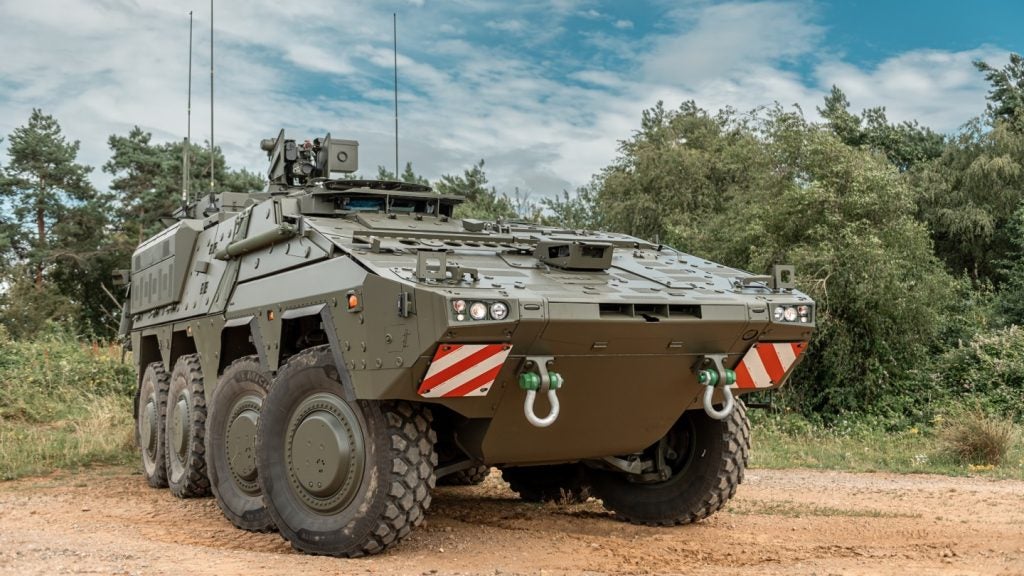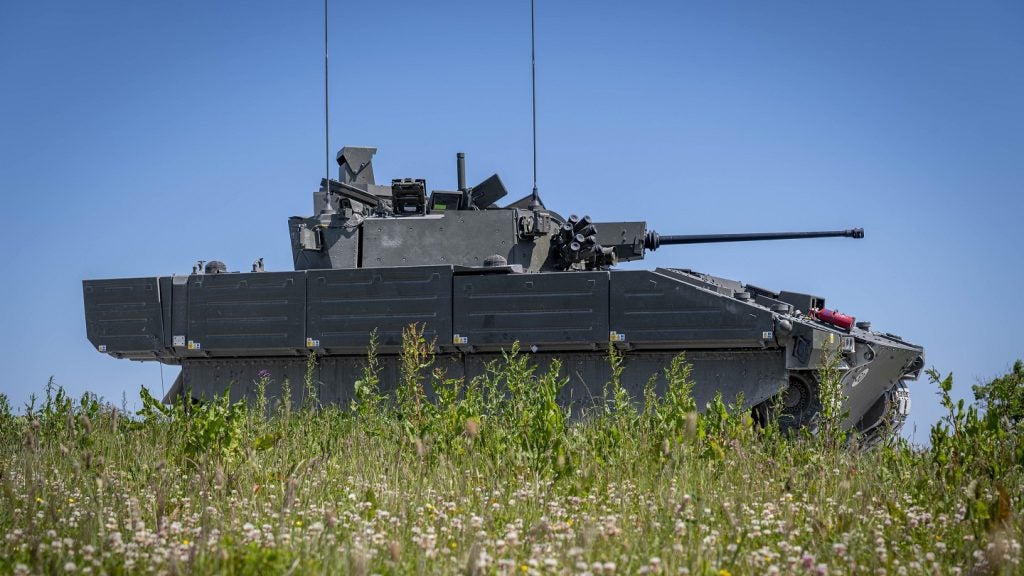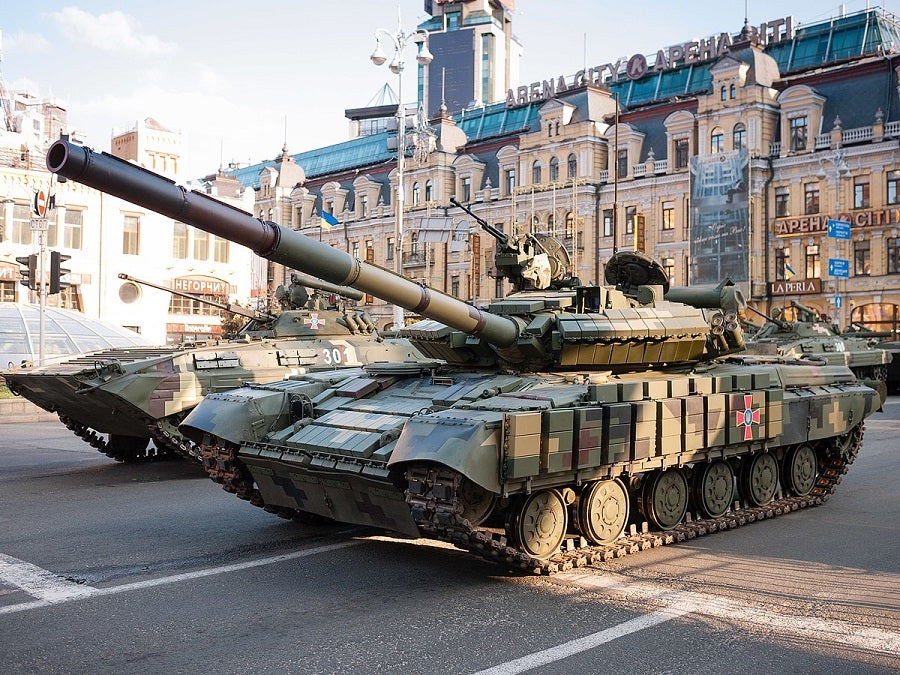
Tank Warfare: Russia-Ukraine Conflict and the Role of T-64, T-72, and T-14
Comparing one tank to another is futile if the two may never meet in battle. If President Putin, however, decides to invade Ukraine, there’s little doubt both sides will deploy tanks.
Ukraine has been receiving military aid from the US and other NATO allies since the end of last year, including weapons that NATO hopes will be enough to deter a potential Russian invasion. One argument is that military support for Ukraine would make it significantly more difficult for Russia to achieve victory.
How well do you really know your competitors?
Access the most comprehensive Company Profiles on the market, powered by GlobalData. Save hours of research. Gain competitive edge.

Thank you!
Your download email will arrive shortly
Not ready to buy yet? Download a free sample
We are confident about the unique quality of our Company Profiles. However, we want you to make the most beneficial decision for your business, so we offer a free sample that you can download by submitting the below form
By GlobalDataIncreased military strength for Kyiv could also mean increased costs – in terms of money and lives – for the Kremlin. This, some hope, would create domestic political trouble for President Putin and he would decide against an invasion.
Other experts think all efforts are futile and arming Ukraine further only pushes Russia closer to an invasion. Either way, if or when it comes to an actual invasion, increased Ukrainian capability would still not be enough to compete with Moscow’s prowess.
But just how much stronger the Russian military is? Whereas the Russian Air Force would conduct airstrikes on certain Ukrainian assets, most of the fighting would take place on the ground. We compare each country’s fighting vehicle capabilities.
Ukraine
According to a GlobalData 2021 equipment inventory of Ukrainian military equipment, the country currently owns approximately 12,300 armoured vehicles, of which about 2,550 are tanks. On a world scale, these figures rank Ukraine sixth and 13th, respectively. This includes main battle tanks, light tanks and tank destroyers.
T-64 main battle tank
The most notable Ukrainian tank is perhaps the T-64 main battle tank (MBT), of which the country has 720. The Ukrainian Kharkiv Locomotive Factory designed and produced the T-64 and it entered service during the Cold War in 1966.
The vehicle was a massive leap from the then respected T-55 and T-62 models. The T-64 is fitted with the Kontakt-1 reactive armour which covers the particularly vulnerable areas of the tank. Upgrades from previous models include a better diesel engine and the replacement of personnel-operated loaders with an autonomous device.
The 125mm smoothbore cannon is now standard, but the T-64 was the first Soviet tank to receive it and it can also fire the anti-tank guided missile AT-8 Songster. The AT-8 has a single high-explosive anti-tank warhead, it can penetrate at least 600mm of steel armour and can engage armoured vehicles up to 4km.
The T-64BV model is also equipped with a 7.62mm coaxial machine gun, a 12.7mm Nikitina-Sokolova-Volkova Tankovy machine gun and two banks of four smoke grenade dischargers. The intended purpose of the T-64s was to beat the then best NATO armoured vehicles.
The T-64s posed challenges to the Ukrainian military in maintaining it and modernised the T-64BM model and the T064BM Bulat was born. Today, the T-64s are technologically superior to most of their Russian counterparts.
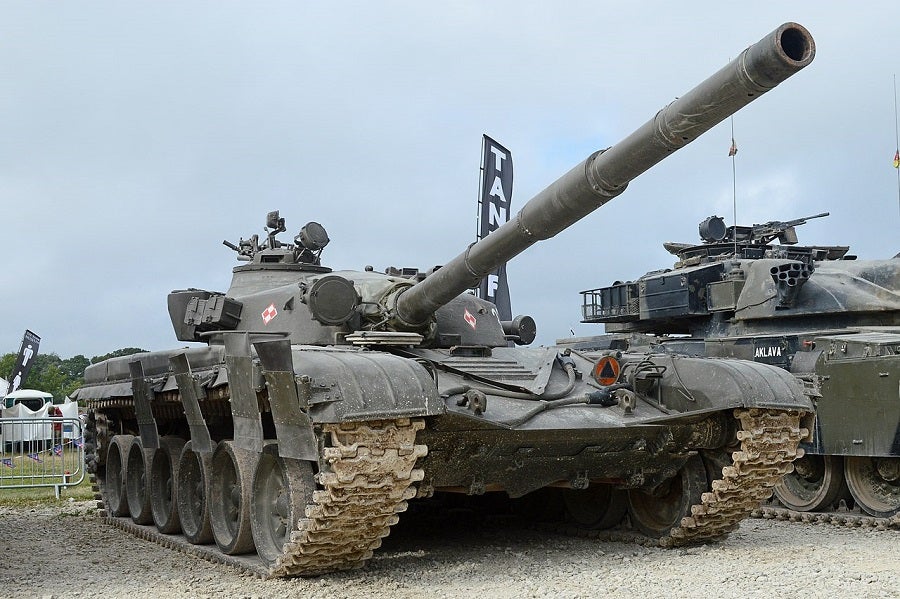
The T-72
The T-72 main battle tank is another Soviet-built main battle tank. Kyiv operates an impressive 3,600 T-72s, including the variants T-72UA1, the T-72B1, the T-72AV and the T-72A.
The T-72s are considerably less sophisticated but easier to maintain than the T-64s.
The armament of the T-72 is equal to the T-64’s and it can carry 45 rounds of 125mm ammunition, of which 22 rounds are carried on an automatic loading carousel. The gun fires separate loading armour-piercing discarding sabot rounds, high-explosive anti-tank rounds and high-explosive fragmentation projectiles.
Fire accuracy is aided by a laser rangefinder sight, ballistic computer and a thermal barrel sleeve. The tank’s anti-armour missile system is the 9K120 Svir (NATO codename AT-11 Sniper), designed by the KBP Instrument Design Bureau, Tula.
The T-72s protection includes armour plating, with combined armour arrays over the frontal arc.
Russia
Russia operates the world’s largest tank fleet with an armada more than 12,400 strong. The country’s total number of armoured vehicles reaches more than 30,100, giving Russia third place, falling 15,000 and 5,000 vehicles short of the American and Chinese fleets, respectively.
The number of T-64s and T-72s alone nearly outmatch the total Ukrainian armoured vehicle capacity.
Next-generation MBT
But an interesting Russian tank is the T-14 Armata developed by Uralvagonzavod. The MBT was unveiled in 2015 and the country’s ambition was to produce 2,300 of them. However, the mass production of the vehicle was delayed due to high costs and only about 20 vehicles are known to be operational.
Russia managed to field-test it in Syria. The combat vehicle is equipped with digitalised equipment, an uncrewed turret and an isolated armoured capsule for the crew. It is based on a modular combat platform, which can also serve as a basis for other armoured variants such as heavy infantry fighting vehicles and armoured personnel carriers.
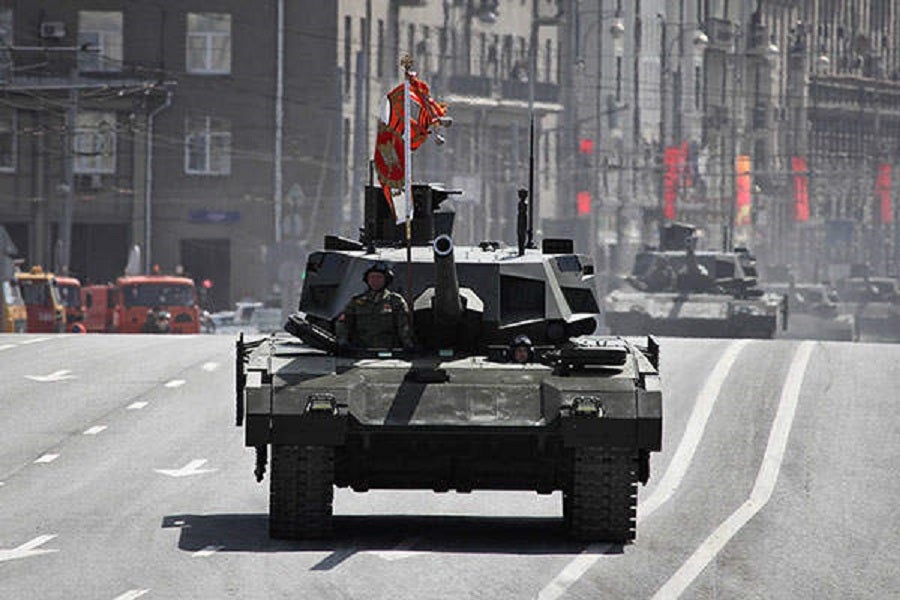
The T-14’s hull is divided into three compartments: a crew cab at forward, the remote-controlled turret with a 125mm 2A82-1M smoothbore gun in the centre and a power-pack at the rear of the tank. The main gun can also fire laser-guided missiles and might be replaced with the 152mm 2A83 in the future on some T-14s.
The tank can also be fitted with secondary weapons including a Kord 12.7mm machine gun and a PKTM 7.62mm machine gun.
The hull is equipped with a modular armour system made of steel, ceramics and composite materials. The low silhouette of the tank avoids exposing the parts to enemy fire, which significantly enhances the safety and survivability of the crew.
Survivability is further enhanced by nuclear, biological and chemical protection, automatic fire suppression systems and smoke grenade dischargers.
Probably the total of 20 T-14s would not be the main reason for Kyiv’s headache, and with the recent delivery of piles of various anti-tank missiles, Ukraine could seriously challenge a Russian advancement. However, considering Moscow would only need to deploy a fifth of its tank fleet to compete with its western neighbour, the T-14s could significantly enhance a battalion.




